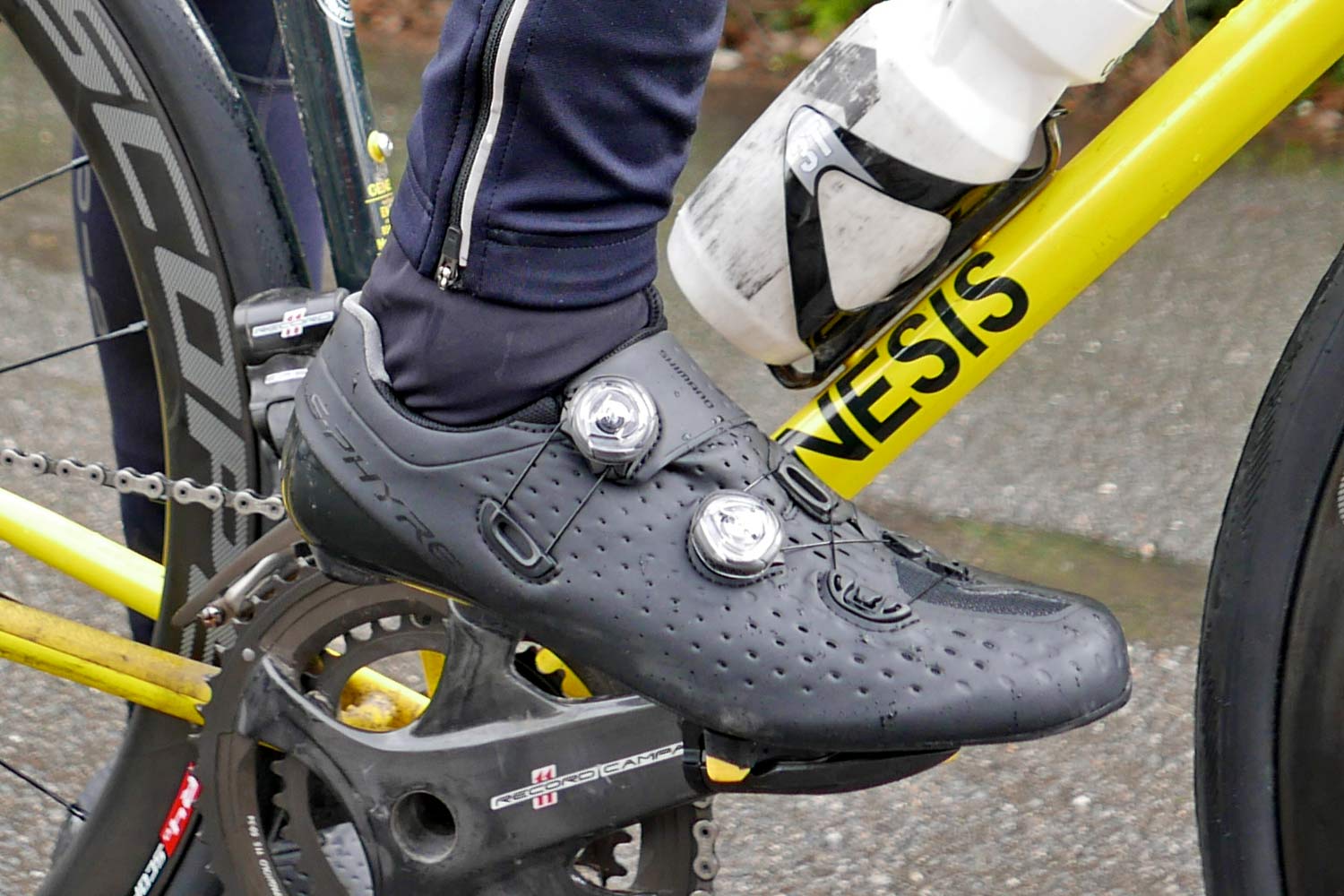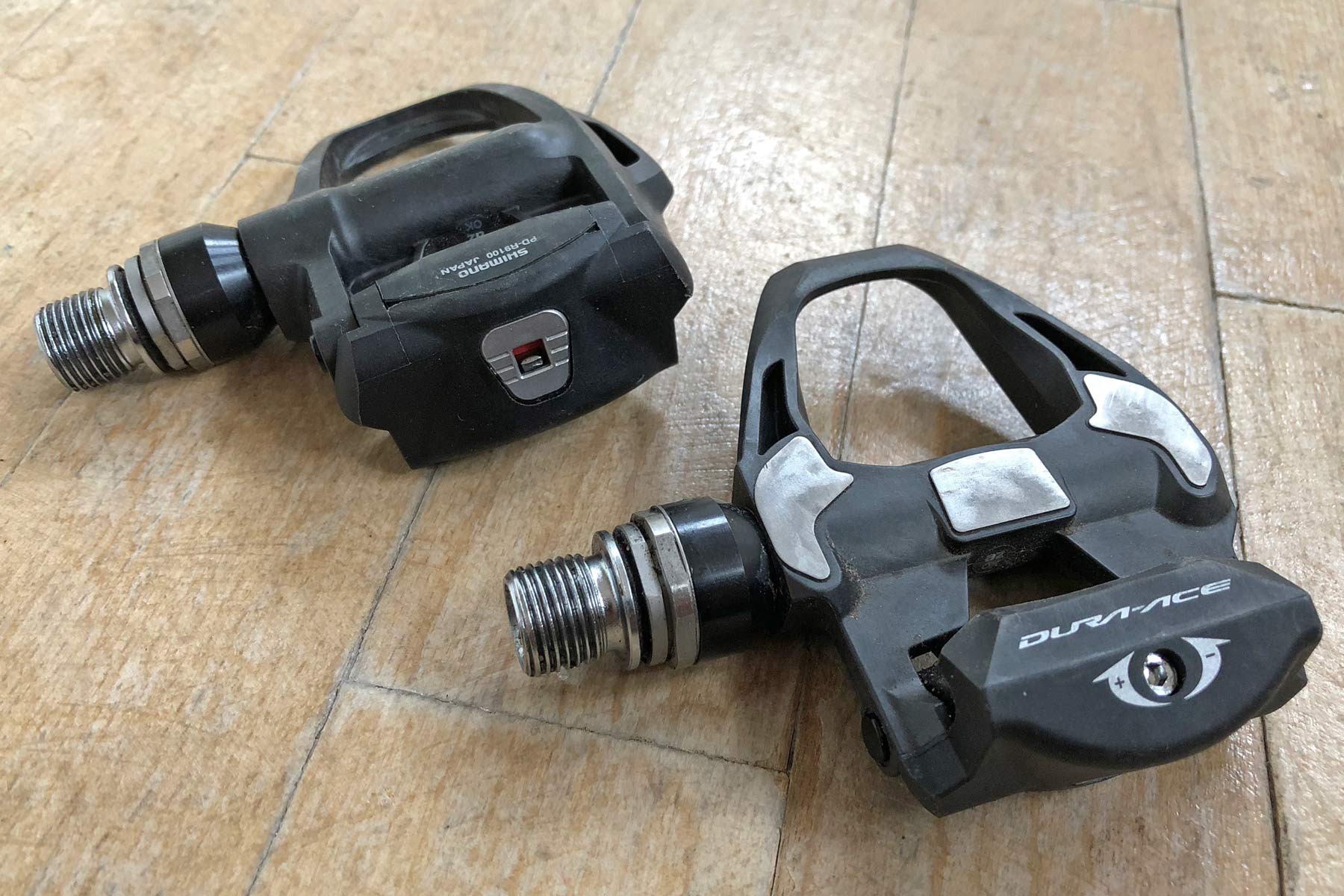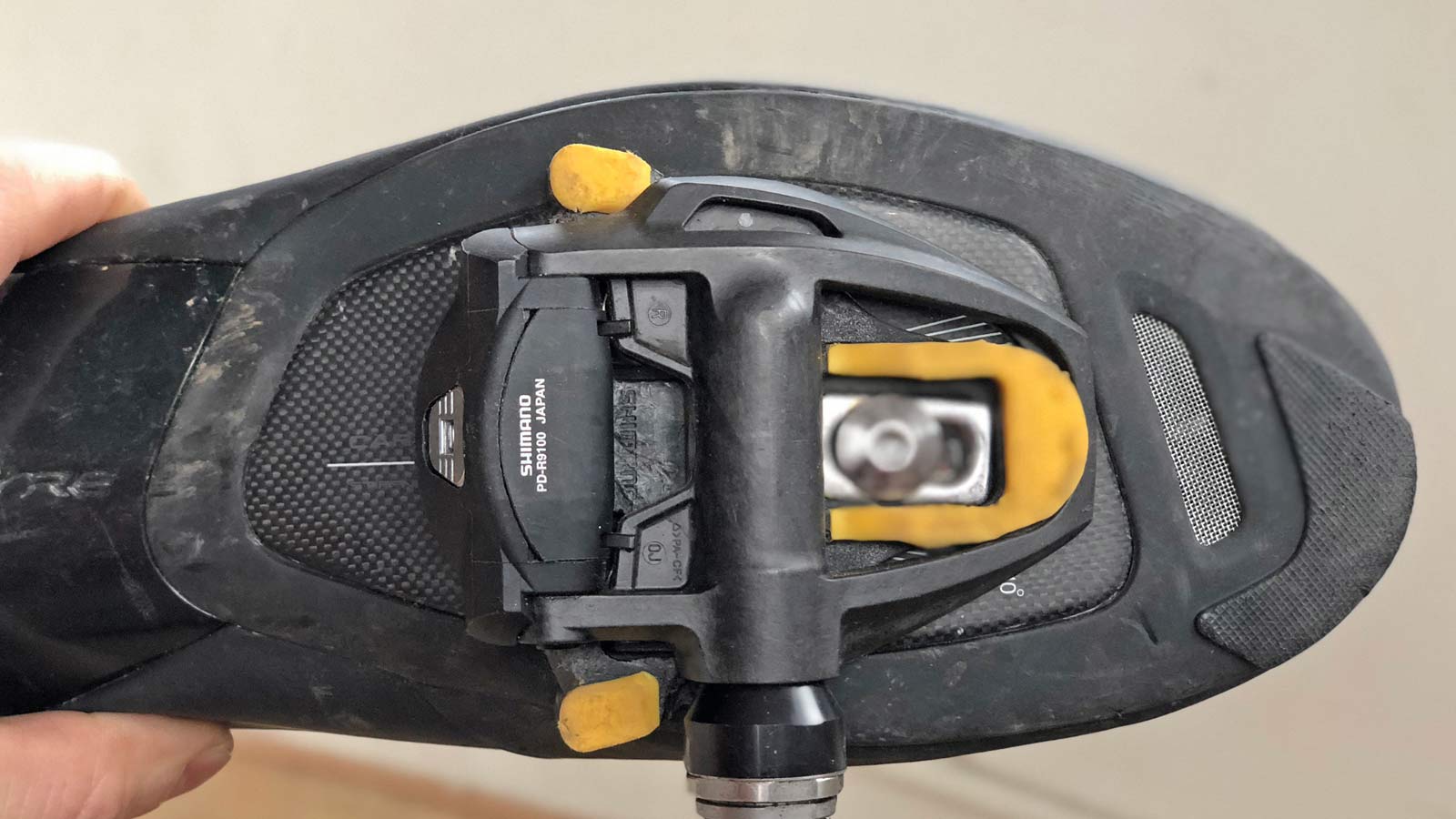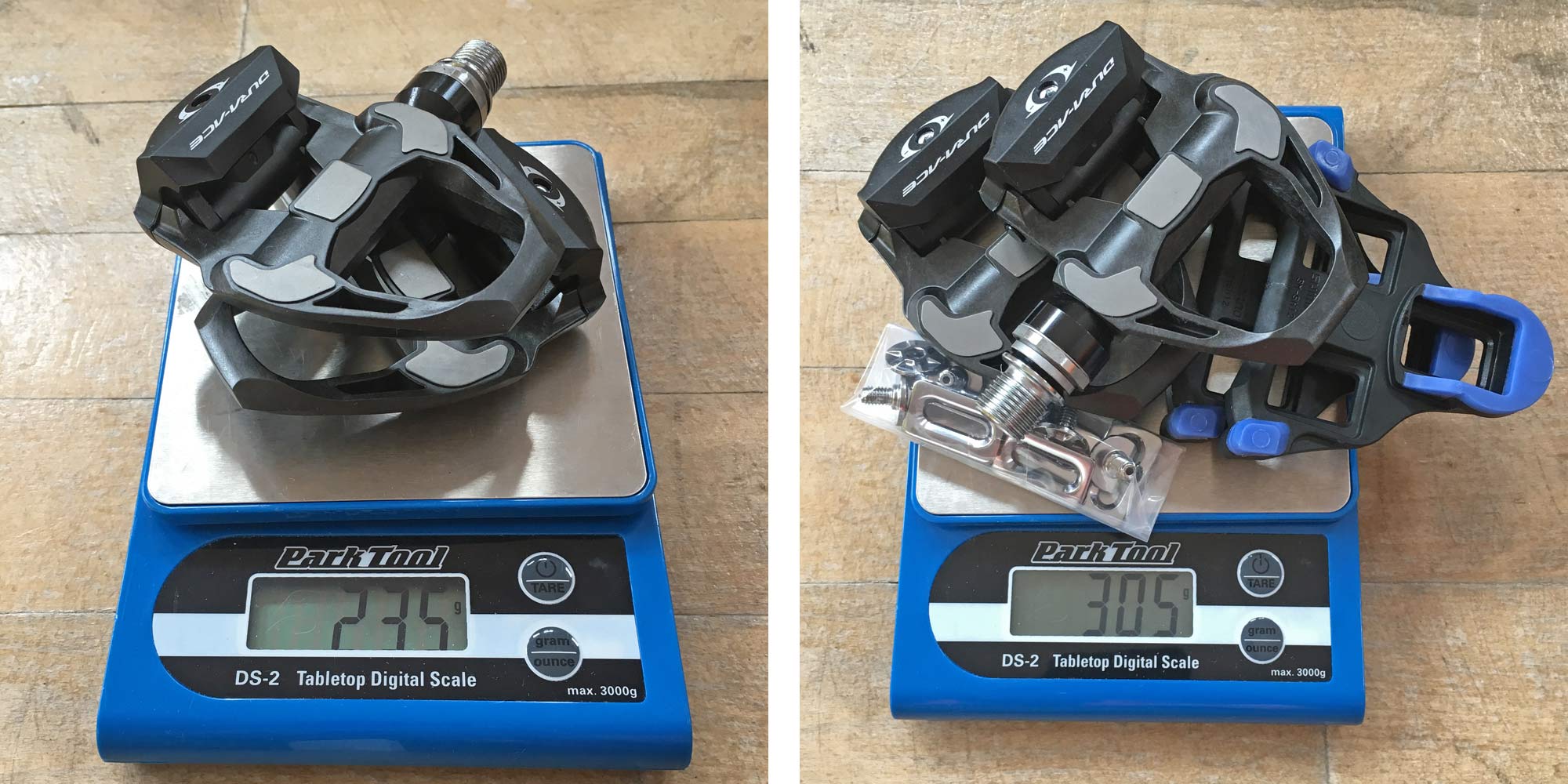Shimano has long-held one of the dominant positions in the road race components market. But the likes of SRAM & Campagnolo continue to be right there always vying for spec on road bikes. But when you look at the road pedals market, no one has the might of Shimano. And with the latest R9100 series Dura-Ace, we thought it was another good chance to see how their pedals stack up.
Shimano Dura-Ace R9100 clipless road bike pedals
Shimano introduced their major R9100 overhaul to the Dura-Ace groupset back in midsummer 2016. But while those four distinct new groupsets didn’t start materializing in the market until at least six months later, the new pedals took even longer. About a year after their introduction, we got our first hands on look at the revised pedals and began testing them soon after. That means that we’ve been putting miles on a couple pairs of these for almost six months now and have a good sense of their performance & durability.
Tech Details & Actual Weights
The new $280/270€ R9100 pedals are not a huge departure from the previous 9000 series SPD-SL carbon pedals, but they do get several updates. The new pedals again use a carbon reinforced composite body with stainless steel wear/contact plates, now with a slightly wider platform. That used to be a single larger (and replaceable) plate, and is now replaced with three smaller plates molded into the pedal body permanently. The pedal body itself is slimmed down a bit too, most notably with new hollow sections cutout to reduce weight (by a claimed 20g).
Inside the pedals move from a 3-bearing setup to a new design that uses two ball bearings, plus a wide roller bushing, something we’ve seen successful from other recent pedals as well. Shimano says that replacing the old roller bearing with a bushing improves long-term durability, keeping the pedals spinning smoothly longer.
The retention mechanism and tension adjustment remain unchanged.
Shimano claims a weight of 228g for the newest generation of Dura-Ace pedals. Ours weighed in just a few grams over that at 235g. When you add in the stock 2° blue plastic SPD-SL cleats that come with the pedals, total system weight goes to 305g, including all mounting hardware.
The newest cleats also shed some weight with a slightly more open design, but mostly by now using hollow shaft steel bolts (which only seemed to save a gram or two on our scale.) Fixed 0° red cleats and larger float 6° yellow cleats are also available. Both of our testers started with the blue-tipped cleats. With the tester coming from Look pedals content with 2° of float, and our tester transitioning from Speedplay preferring more with the 6° cleats.
Setup, Fit & Riding Impressions
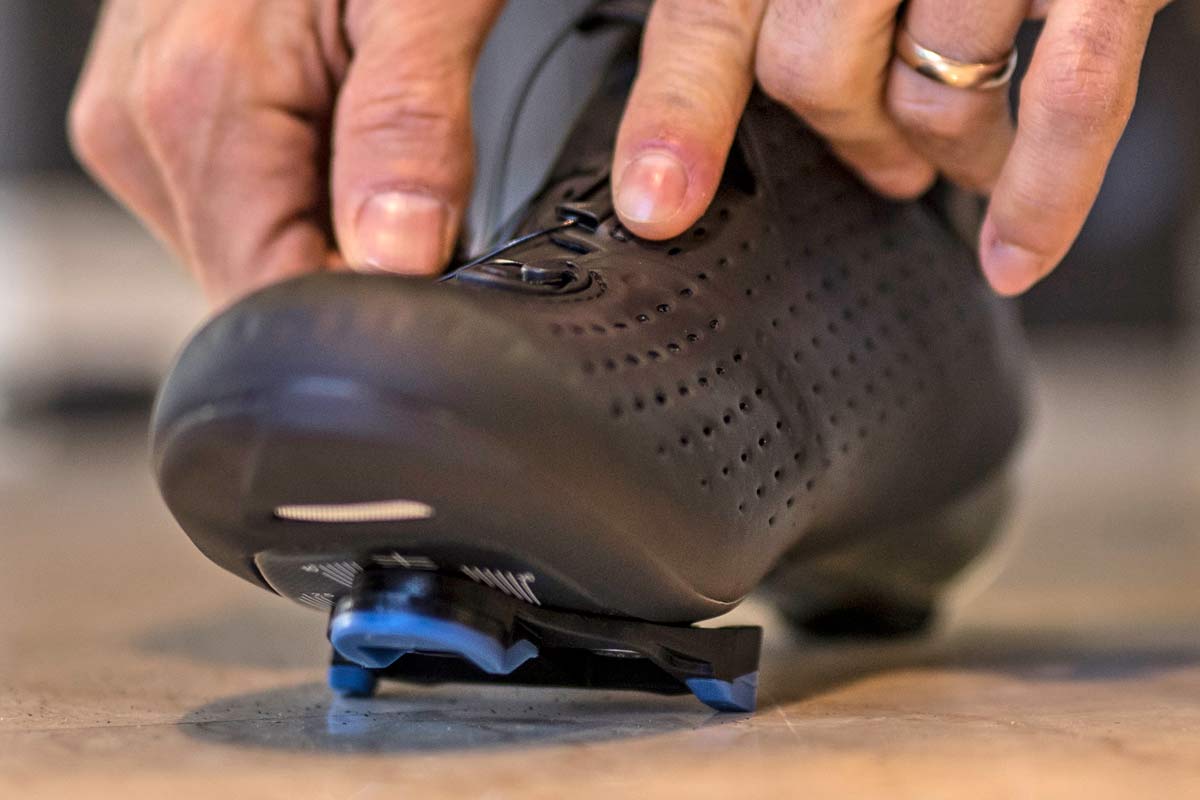
The new Dura-Ace pedals have a nice reassuring click when clipping in, and the tension range is pretty wide making it easy for our testers to get comfortable coming primarily from riding other road pedals. Even with a wide tension range, we mostly stuck with lower tension for easy clipping out. The pedals still felt quite stable with their wide platform, and retention on the lower setting remained solid.
Coming from Look Keo pedals a reduction in side-to-side movement of the feet was truly noticable. A big portion of that is how the plastic cleats wear & the more narrow platform. The difference from Speedplay was less pronounced since their protected pedal-cleat interface is less susceptible to the same type of wear. But even then, the new Dura-Ace pedals felt stable. The wide cleats made for a more stable platform when walking (always mildly treacherous in road shoes, especially on the terrazzo stairs of my apartment.) That also gave the impression of a more solid connection to the soles of our shoes, even if they are sharing the same three bolt attachment points.
The bearings in the R9100 pedals are excellent, spinning smooth out-of-the-box, and the half a year since. They immediately drop into their balanced position with the rear pointing down, ready to clip in. Our experience with other pedals, for example the Looks when they were new, it felt like we really needed to wear in the bearings to get them to hang. And as much as we love the two-sided Speedplay for performance like their resistance-free, customizable float, they were surprisingly not as easy to enter at the Shimano pedals. The Dura-Ace pedals are always hanging in the same position, making them easier to clip into on the first stab, once we trained our brains not to kick them into a spin.

The downsides of the Shimano setup was probably just in getting the cleats exactly where we wanted them and aligned. Coming from Look, our tester lamented the loss of those pedals’ easy-to-use alignment pad that makes cleat replacement a no-brainer. The Speedplays are also a bit more simple to replace since an adapter usually stays fixed to the sole. Instead we had to take a bit of time to get it all lined up on the new pedals (which had slightly different float than we were used to.) And when it was time to replace cleats, we simply traced the outline of the existing cleat with a Sharpie to replicate the position.
The SPD-SL cleats also feel pretty low-tech compared to the rest of the setup. The plastic they are made from seems to scratch quite easily, and the rubber waling grippers are prone to separating from the plastic base rather quickly. Of course the cleat material must be softer than the pedal, so does not prematurely wear the pedal body, but our cleats looked properly worn after just a few weeks. And we feel the need to replace them more frequently that either the Keo or Zero equivalents.
Final thoughts
All in though, being slightly heavier than the top of the line Looks with carbon blade and slightly lighter than the Zero Stainless pedals that they replaced, they tick all of the performance boxes. The R9100 Dura-Ace pedals are a piece of a classic Shimano kit – well-engineered, durable, and reasonably, but not-over-the-top light. These are something you put on your bike and basically forget are there.
They do their job, do it well, and we haven’t really had to touch them since. We have just opened them up now for an easy winter service and some fresh grease. They were still spinning smoothly and the grease inside wasn’t really contaminated. That took a little care with the tiny loose ball bearings on the spindle, but was a fairly painless job that has them ready for another season of road riding.
